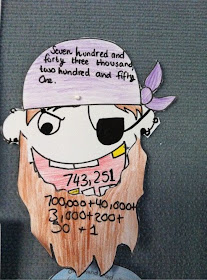It have been two weeks of working at my new school so I decided to write a reflective post about the past two weeks. Below are some things that I have enjoyed, found interesting, or compared with other schools I have worked at:
1. Year 7 students are really young: I had a little bit of first day nerves and as soon as I saw the students, my nerves went away as I realised that most of the students I would be teaching are still kids. Thus, I could use quite a bit of my primary teaching skills with the middle year classes.
2. Year 9 students are the same in Canada and Australia: Since Year 9 is the first year of high school in Canada, students come in with a mix of attitude and apprehension (both excited to be in high school, but also go back to being the little fish after a year of being the top dogs). I guess I thought that year 9 students in Australia wouldn't have the same issues. Well, I have found that regardless of it is your first year in high school or not, Year 9 students are the same! It must be an age thing. It can sometimes be tricky to teach this year level as you are dealing with students moving from a pre-teen to teenager stage. So I am bound to use my charm and skills to work with my year 9's and get them on board!
3. Relationships, relationships, relationships: From when I first started teaching to now, one of the most important lessons I have learnt is that teaching is all about relationships. Whether it is a primary school class or high school class, students need to be able to trust their teacher and feel comfortable in their classes. My first week in the new school was tough as I had gone from knowing all the students in my year level (even those I didn't teach) and having such a strong presence with them, to starting fresh. I guess I wasn't prepared for that feeling and the huge realisation that I now need to build new relationships with my new students. Week two was much better as I became more familiar to the students and we have started to build an excellent working relationship. Some students who gave me a tough time in week one have become my biggest fans in week 2.
4. Time: High school teachers have less contact time and more planning time. I cannot stress how important it is for teachers to adequate time to plan and organise their classes. With this planning time, teachers are able to really focus on their lessons and create more engaging and exciting lessons for their students.
5. My height: Since I am teaching high school students now, I feel even more shorter than I did teaching primary school. I just need to maintain my presence in the classroom and everything will be alright!
6. Team teaching/planning: One thing I loved about teaching in a primary school was working so closely with my team to plan and teach lessons. In high school, the ability to work with other teachers teaching the same classes is far less. Perhaps this will be my challenge, to be able to work with other teaching the same courses to maintain consistency and to have professional dialogue and sharing of ideas to strengthen our course.
7. Support for Students: My new school (from what I have seen) has a great team of support staff that are there to work with students in addition to teachers. It is so important to have other staff members at the school that are able to assist students in both their academic and social success. Sometimes as teachers, it is difficult to give students the one-on-one attention that many need, so having a welath of support workers is wonderful to ensure that students are enjoying their schooling.
8. A library/resource centre: Oh how I love the library! Books, books, such wonderful things! In two weeks, I have read such a large number of novels for my classes.
9. Canteens: Canteen food is canteen food...it doesn't matter where you are! (canteen = cafeteria for my North American friends)
10: I love teaching!: It is a little strange how excited I get about planning new lessons and finding cool ideas and strategies for teaching new skills. I absolutely love it, perhaps a little too much. Prime example: I am beginning my literacy and numeracy intervention program next week and needed to create my own timetable. Well I created three different ones, just because I didn't know which one I thought would be best for the students. Yup, that's me! Although teaching can get the best of you at times, I don't know what else I would rather do :)
 I was pretty proud of how lovely and colourful our display turned out. Students worked in a cooperative group structure to complete this task in which they needed to identify the personality, appearance, feelings/emotions, actions and famous last words of one of the characters from the film. They then took turns in presenting their posters to the class for the students to complete their character analysis chart learning about all characters in the film.
I was pretty proud of how lovely and colourful our display turned out. Students worked in a cooperative group structure to complete this task in which they needed to identify the personality, appearance, feelings/emotions, actions and famous last words of one of the characters from the film. They then took turns in presenting their posters to the class for the students to complete their character analysis chart learning about all characters in the film. 












































